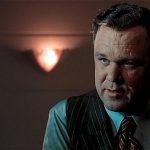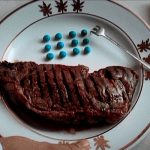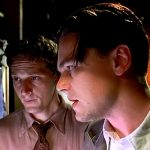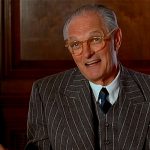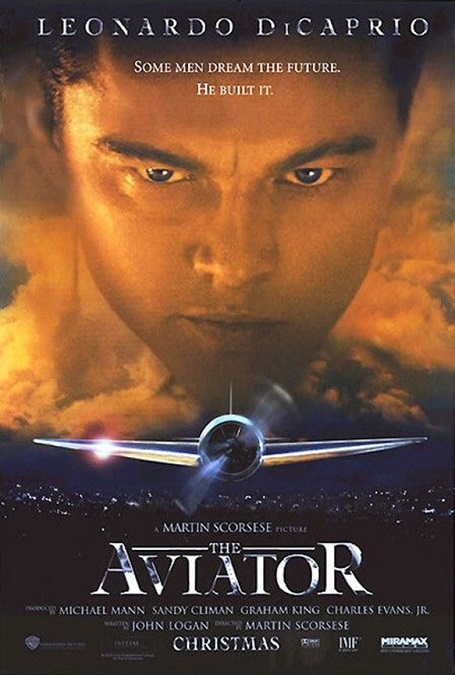
The Aviator – 2004
This was a wonderfully detailed and well-made film. It is an epic biopic of famous film director and aviation tycoon, Howard Hughes. But anybody who knows about Hughes, the man, also has to acknowledge his severe obsessive compulsive disorder. He has an overwhelming fear of germs and disease, though that is only a single aspect of the sickness. It is a condition that grows worse and worse over the course of the movie until he nearly devolves into a gibbering lunatic. Leonardo DiCaprio was incredible in his portrayal of the eccentric yet brilliant man.
From the beginning, He was shown as nothing more than just that. His films enjoyed success because of his singular vision and attention to minute details. He has money, fame, women, and practically anything he wants. He has a new Hollywood starlet on his arm every night. The movie focuses on his relationship with Katherine Hepburn, brilliantly played by Cate Blanchett. She seems to understand and accept his eccentricities, though eventually they become too much for her. They, and her relationship with Spencer Tracy, are enough to pull her away from him. But his deep obsession with airplanes and building his aviation empire consumes his life, leaving little room for something so trivial as a relationship. And though his failures are gargantuan, his successes are phenomenal. The crash sequences, in particular, were well-done and exciting to watch.
He buys TWA Airlines and becomes even wealthier. He begins designing aircraft under government contracts for WWII. But he is so obsessive compulsive over the minor details of the planes that the war is over before he completes them. Then, looking to the future of aviation, he changes Transcontinental & Western Air to Trans World Airlines, with the intent to offer international flights. Unfortunately, the owner of Pan Am Airlines, Juan Trippe, played by Alec Baldwin, has a monopoly on Trans-Atlantic flights. He bribes Senator Owen Brewster, played by Alan Alda, to introduce a bill to Congress that would give Pan Am exclusive rights to Intercontinental air travel.
In order to block Hughes, Senator Brewster attacks Hughes in public hearings that accuse him of being a war profiteer because he never completed his government contracts for the WWII planes, but kept the millions of dollars he was given. By this point in the film, Hughes’ disorder has spiraled him down into a pit of paranoia, causing him to lock himself away in a film screening studio for three months, a place he called a germ-free zone. But his girlfriend, actress Eva Gardner, played by Kate Beckinsale, helps him return to the light of day. She prepares him for the hearings, which he, with his brilliance, charm, and honesty, weathers and overcomes. He brings to light the fact that Brewster is Trippe’s crony. The bill is defeated and TWA is allowed to make trans-Atlantic flights.
Now, while all that is interesting, what moved the film from good to great was the portrayal of Hughes’ disorder. His case wasn’t mild or chronic. It was severe. It was so intense that it compromised the man’s ability to function in the real world. Aside from the extreme mysophobia, or germophobia, he had other compulsive habits that people would dismiss as eccentricities. He would order a steak dinner with peas, and all the peas had to be exactly the same size, and arranged in a carefully ordered pattern on the plate. If any one of the peas were moved, he would become unable to continue eating the meal.
Director Martin Scorsese did an incredible job of leading the viewers down into the dark pit of madness. In several memorable scenes, Hughes would utter a phrase, but for whatever reason, he felt that it didn’t sound right coming out of his mouth. His brain couldn’t let it go until it came out right, and he would be helpless to stop himself from repeating the phrase over and over again. The way DiCaprio played it made it clear that he was completely aware of his crazed babbling. He would clamp his hands over his mouth, and the terror in his eyes was frightening to watch.
And more than just DiCaprio, Blanchett, Baldwin, Alda, and Beckinsale, the movie had a slew of other recognizable names, a few of them playing yet other recognizable names from old Hollywood. Gwen Stephani played Jean Harlow. Jude Law played Errol Flynn. John C. Reilly, Matt Ross, Ian Holm, Willem Dafoe, Adam Scott, Frances Conroy, Brent Spiner, Edward Herrmann, and Danny Huston, all came together to turn in some great performances in this incredible movie.
And I would be remiss if I didn’t make special mention of two of the film’s five Academy Awards. Blanchett’s Best Supporting Actress winning portrayal of the iconic Katherine Hepburn was flawless. She had the look, the mannerisms, and the voice down pat. She was so perfectly cast that I can’t imagine anyone else playing the part. And I must also recognize the movie’s Oscar for Best Costume Design. The costumes were magnificent, especially when it came to the glamorous fashions worn by the Hollywood stars of the 1930s. Perfection! And it’s easy to say the same for the whole movie.

